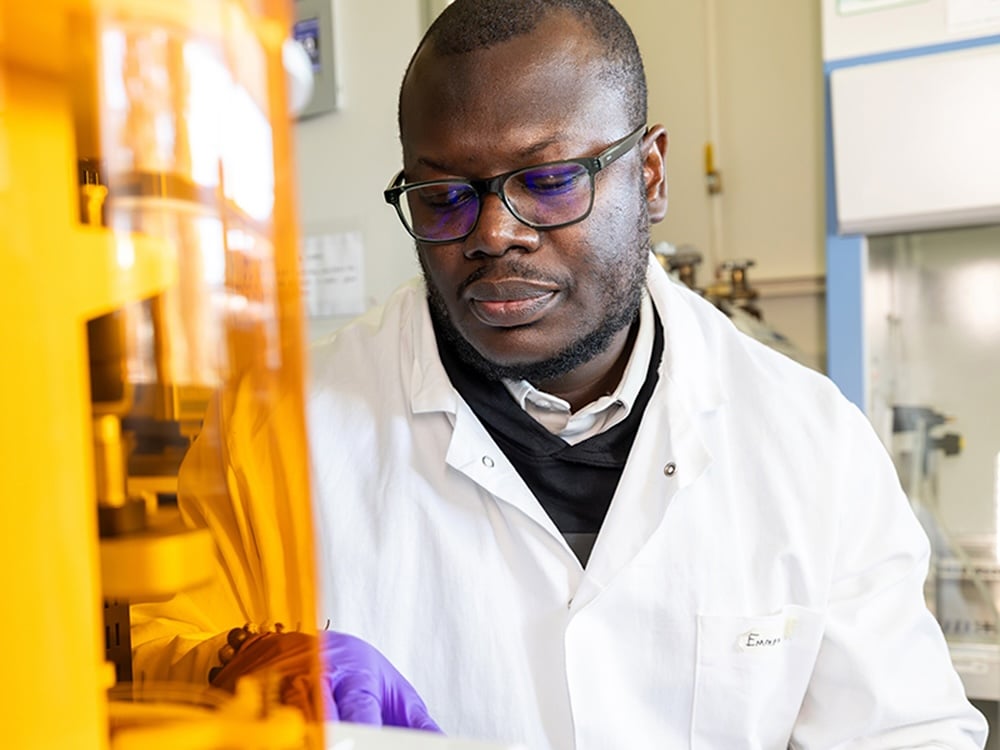Science
UBC Scientists Create 3D-Printed Lung Tissue for Disease Research

Researchers at the University of British Columbia (UBC) have achieved a significant breakthrough in medical science by successfully 3D printing lung tissue and subjecting it to smoke exposure. This innovative model aims to advance the understanding and treatment of chronic respiratory diseases, including asthma and chronic obstructive pulmonary disease (COPD).
The team, led by Dr. Xuejun Wang, developed a complex model that mimics human lung conditions. By printing intricate structures that resemble lung architecture, the researchers are able to observe how lung tissue reacts to various stimuli, including harmful substances found in smoke. The implications of this research are profound, potentially paving the way for new therapeutic strategies.
Innovative Techniques in Tissue Engineering
The process involved using advanced 3D printing technology to create a scaffold that supports living cells. These cells are derived from human tissues, allowing the researchers to replicate the biological functions of the lung. This method not only enhances the accuracy of lung disease studies but also reduces reliance on animal testing, aligning with ethical research practices.
According to the findings published in March 2024, the printed lung tissue responded predictably to smoke exposure, demonstrating inflammation and cellular damage similar to that seen in actual lung diseases. This model enables scientists to conduct experiments in a controlled environment, leading to better insights into disease mechanisms and potential treatments.
Implications for Chronic Disease Treatment
Chronic diseases such as asthma and COPD affect millions of people worldwide, significantly impacting quality of life. By utilizing this 3D-printed lung model, researchers hope to identify new targets for drug development and test the safety and efficacy of potential therapies more effectively.
The ability to simulate lung responses offers a promising avenue for understanding how environmental factors contribute to chronic disease progression. As the research advances, it could lead to breakthroughs in personalized medicine, tailoring treatments based on individual responses to specific stimuli.
Dr. Wang emphasized the importance of this research, stating, “We are taking a crucial step towards creating more relevant models for lung disease research. Our goal is to bridge the gap between laboratory results and clinical applications.”
This pioneering work not only highlights the potential of 3D printing in biomedical research but also underscores the commitment of UBC scientists to address pressing health challenges. As they continue to refine their techniques, the hope is that these models will contribute significantly to the fight against chronic respiratory diseases, ultimately improving patient outcomes.
-

 Science3 months ago
Science3 months agoToyoake City Proposes Daily Two-Hour Smartphone Use Limit
-

 Top Stories3 months ago
Top Stories3 months agoPedestrian Fatally Injured in Esquimalt Collision on August 14
-

 Health3 months ago
Health3 months agoB.C. Review Reveals Urgent Need for Rare-Disease Drug Reforms
-

 Technology3 months ago
Technology3 months agoDark Adventure Game “Bye Sweet Carole” Set for October Release
-

 World3 months ago
World3 months agoJimmy Lai’s Defense Challenges Charges Under National Security Law
-

 Lifestyle3 months ago
Lifestyle3 months agoVictoria’s Pop-Up Shop Shines Light on B.C.’s Wolf Cull
-

 Technology3 months ago
Technology3 months agoKonami Revives Iconic Metal Gear Solid Delta Ahead of Release
-

 Technology3 months ago
Technology3 months agoApple Expands Self-Service Repair Program to Canada
-

 Technology3 months ago
Technology3 months agoSnapmaker U1 Color 3D Printer Redefines Speed and Sustainability
-

 Technology3 months ago
Technology3 months agoAION Folding Knife: Redefining EDC Design with Premium Materials
-

 Business3 months ago
Business3 months agoGordon Murray Automotive Unveils S1 LM and Le Mans GTR at Monterey
-

 Technology3 months ago
Technology3 months agoSolve Today’s Wordle Challenge: Hints and Answer for August 19









